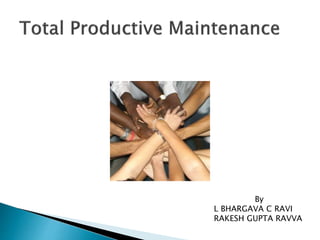Total Productive Maintenance (TPM) is a Japanese concept that involves all employees in an organization working together to improve equipment reliability and reduce breakdowns and losses. The goals of TPM include increasing production quality and job satisfaction through continuous improvement efforts and empowering employees. It aims to move organizations from a breakdown-based model of maintenance to a proactive, preventative approach through techniques like predictive maintenance, overall equipment effectiveness measurement, and 5S practices.







































































